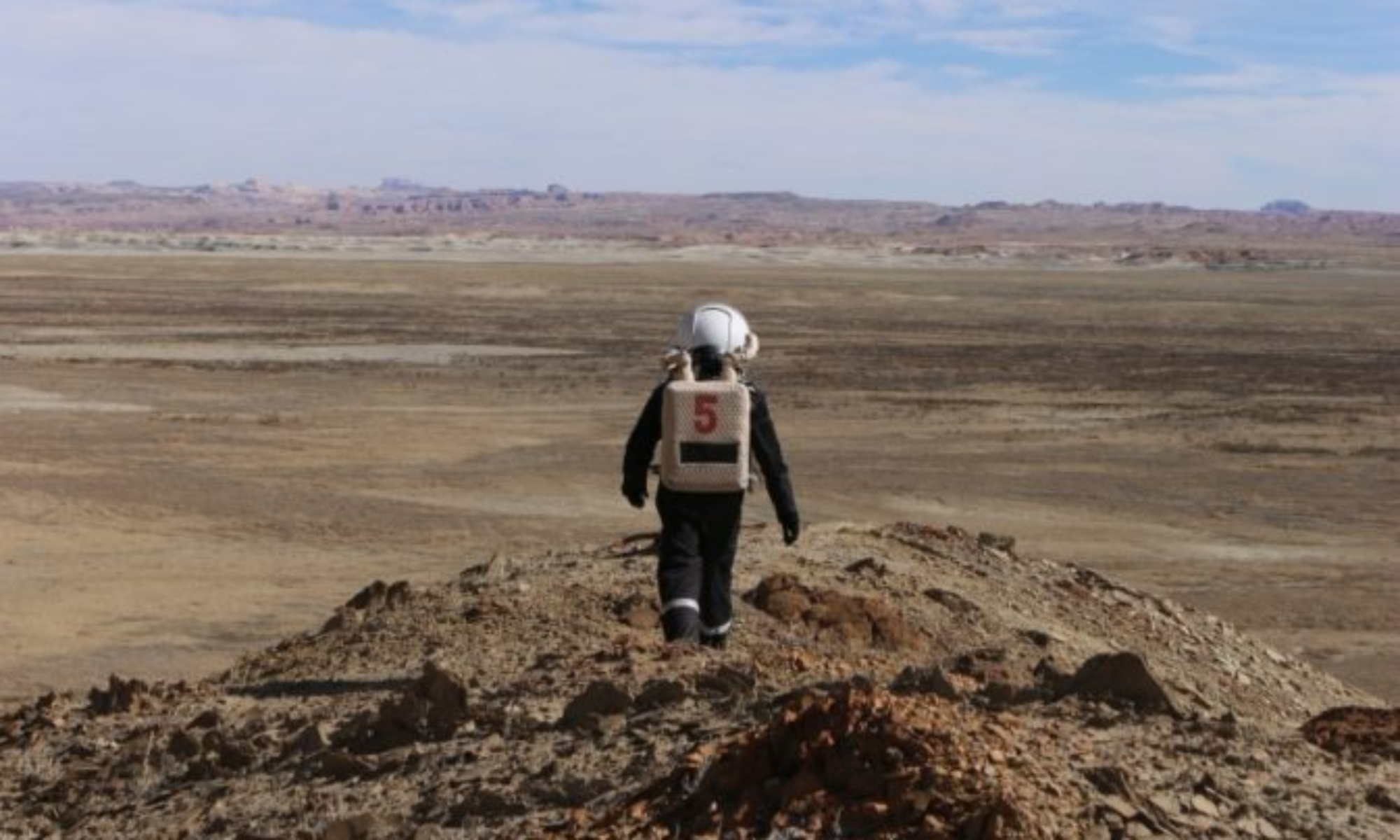Crew 281 EVA Report 25-05-2023
EVA # 12
Authors: Ritupriya Patil (Executive Officer), Ana Pires (Crew Scientist)
Purpose of EVA:
Drone flight to record and do aerial imagery for new exploration areas
Acquire vertical images and videos for previously done geotechnical survey of Marble Ritual (Not completed)
Start time: 0753 hrs
End time: 1112 hrs
Narrative:
This was another long EVA with a crew of three. At 0748 hrs the crew entered the airlock exiting at 0753 hrs. They first checked all the rovers and collected the hours and SoC information, and it was verified that all were securely plugged in. They then unplugged Opportunity and Curiosity and headed out for the first destination at 0758 for the intersection of Cow Dung and Watney Road. The area seemed like a former riverbed; the crew saw lots of sedimentary rocks possibly washed by the flowing water in the past. They also witnessed calcite compressions on the sides of the pathway. The crew walked no more than 600 m and explored. Ana (Crew Scientist) collected 7 rocks (1167 g) and 1 Tube pf soil (72 g). Ritu (XO, EVA Lead) deployed the drone to capture aerial.
For the next stop, the crew wrapped up and drove on Cow Dung Road until they arrived at 1101 Road intersection. From there, they went on foot for about 1 Km and reached Barrainca’s Butte. On the way, they saw Hematite and Ana collected 6 rock samples (789 g) and 1 tube of soil (60g). Ritu was ready for the drone flight and got some great shots of the crew against Barrainca’s Butte with the drone along with other footage of the area.
The crew then left for MDRS and dropped Marble Ritual due to overheating. Today’s EVA was a great reminder of how space and extreme environments can be challenging. A total of almost 2 Km hiking with the suit and backpacks as life-support system was not an easy task in the high sun. Combined with driving the rover without a support for the backpacks to rest on gave the crew some muscle aches. Which is why ergonomics in spacesuit design proves to be an essential aspect of space exploration. Comfortable spacesuits will aid in longer exploration times and achieving research goals.
Also, to add to the challenges of hiking, XO’s waist buckle kept popping open and the backpack would slide down, pulling the weight of the life support system and the helmet on the shoulders. Rest of EVA crew tried to change length of the belt and resetting it but seemed like the buckle has seen some wear and tear over past missions and that wasn’t a permanent fix.
Despite all the pain and exhaustion the expedition was fruitful and left the crew with happiness for exploring one more geological miracle!
Overview of EVA
Drove to the intersection of Cow Dung and Watney Road and then walk no more than a radius of 1 Km to explore the area
Drove further on Cow Dung and 1101 Road intersection and walked 1 Km to north explore Barrainca’s Butte
Issues Experienced During EVA
Intermittent comms issues.
XO, backpack buckle came undone a couple of times while hiking back from Barrainca’s Butte. It could have been due to inadvertent pressure on the belt buckle, and it popped open. Also seems like the buckle has seen a bit of wear and tear.
Outcomes
Crew completed Rover checks
Explored intersection of Cow Dung and Watney Road area, collected soil and rock samples, and drone footage
Explored Barrainca’s Butte region, rock and soil samples and drone footage
Collected 18 rocks, 1.956 Kg; 2 tubes of soil, 132 g
Destination:
Intersection of Cow Dung (Zubrin’s Head) and Watney Road. Then walk 1 Km North East
Intersection of Cow Dung and 1101. Explore Barrainca’s Butte region, and then walk 1 Km to North/ North West
Marble Ritual, walking no more than a radius of 500m; (Depending on Wind conditions)
Coordinates :
(use UTM WSG 84): 519833E, 4248257N
(use UTM WSG 84): 519984E, 4247645N
(use UTM WSG 84): 518687 E, 4250789 N
EVA Participants 3: Ritupriya Patil (XO, EVA Lead), Ana Pires (Crew Scientist), KC Shasteen (Crew Engineer)
Road(s) and routes per MDRS Map:
Drive on Cow Dung Road to the South until the Watney road intersection, park on the side park on the side of intersection
Drive on Cow Dung road further south the intersection of 1101, park on the side of intersection
Mode of travel: Rover

